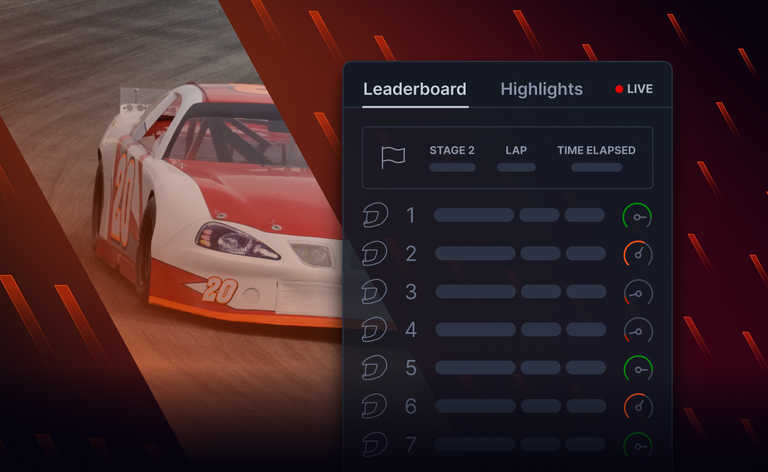When interactions occur predominantly through mobile, customer satisfaction relies largely on the efficiency of technologies delivering the experience. Based on the Ably/OnePulse survey, The Future of Sports Data, the article below identifies six main UX expectations affecting the way consumers choose (and choose to leave) bet-waging platforms, zooming in on engineering and infrastructure to prevent customer churn.
UX Expectation 1: Speed
Nearly 70% consumers following live sports on a mobile app would look for an alternative if the app was slow or not working, according to OnePulse.
E-sports and in-play betting rely on ultra-low latencies to ensure seamless transfer of information direct from field to spectators watching the game remotely and/or betting on the game’s many different aspects. From a tech perspective, delivering minimal-latency experiences at scale relies on multiple, scalable servers, located close to customer groups.

Read about running and maintaining distributed infrastructure here.
UX Expectation 2: Live synchronization
90% of US adults now use a mobile device while watching TV
Ensuring there’s no dislocation in customers’ experience between primary, secondary and even tertiary devices plays a part in how customers perceive the reliability of the data and service they are receiving. Aside from reduced customer trust in the technology, when it comes to cash-out, in-play betting, live commentary and scores, or fantasy sports games, data received out-of-sync results directly in commercial damage as frustrated customers switch apps.

Synchronization across screens relies on sophisticated, second-generation pub/sub data delivery platforms, with mechanisms in tact for ensuring data integrity. This is the logic behind Ably applying datacenter specific serial numbers to each message. This avoids any single point of congestion, meaning integrity doesn’t compromise speed or reliability, and messages are persisted in two physical data centers for two minutes.
More about tech controlling redundancy and reliability of realtime data can be found here.
UX Expectation 3: Constant connectivity
80% users follow live sports while on the move, 88% place a high value on speed and reliability.

Following sports on the move means connections open and close and cause disruptions to data delivery. To make sure no data is missed out, mechanisms need to be in place so disconnected devices that reconnect can resume the data stream where they left off — ideally without engineers having to handle failed connection states. Implementing a stateful design ensures continuity of service, data integrity and consistent device awareness, even when connections are unreliable.
More about how connection state recovery functions here.
UX Expectation 4: 0% Downtime (100% uptime)
63% users would change to a more reliable betting app if stats were incorrect when placing an in-play bet.

SLA uptime guarantees mean maximally watertight data transfer systems. However, to cover all bases — network partitions, intermittent or unreliable data centers, client libraries need embedded intelligence to detect degraded performance or network issues, and automatically route traffic to healthy data centres.
UX Expectation 5: Consistent message ordering
90% users get annoyed by poor reliability when using an app to follow live sports.

In the high-stakes sports-data industry, updates need to be delivered and displayed in the order they actually happened or you run the risk of losing customers who have placed bets on incorrect information. While it is tempting to lower bandwidth and latency by sending only the updates of a dataset to a device, data deltas/ patches can result in corrupted data, and the same data stream may be received differently across different devices. Unique incremental messaging serial numbering means messages published to a channel anywhere in the world follow the same order. Devices subscribed to this channel will also receive the same data in the same order.
Read/watch how to install reliable message ordering here.
UX Expectation 6: Data integrity, independent of traffic
3.6 billion people tuned in to the 2016 Summer Olympics in Rio de Janeiro…

Ubiquitous connectivity means technical systems must cope with unprecedented, often unexpected spikes in demand over peak moments in a sporting event. Keeping millions of connections alive, and publishing live data streams to these constitutes a significant engineering burden. The most reliable ways to absorb unexpected spikes in traffic involve actively managing capacity over globally distributed data centers by means of autoscaling systems, and ensuring sufficient spare capacity at all times through systems that shed excess traffic to other data centers. Manually monitoring overprovisioning is also recommended during times of excessive demand.
Read (and watch) how engineers implement demand-specific, indefinitely scalable realtime functionality here.
The full report 6 Ways to Lose Sports and Betting Consumers Through Poor Realtime UX explores ways to keep customers in more detail. Download it for free — no email required.
To know more about the technology — or aspects of the technology — that guarantees burstability, message ordering, connectivity, reliability and integrity of realtime data transfer, get in touch.
Ably provides a globally distributed, high-performance data stream network. It allows users to stream data anywhere, between any device, with mission-critical reliability. Ably’s infrastructure forms the basis for building live, next-generation digital services, making it possible for users to deploy, manage, and distribute streaming APIs outside their organization.




